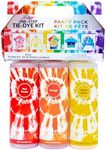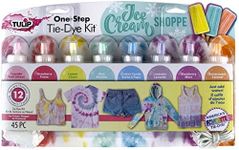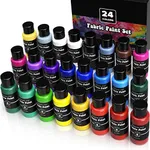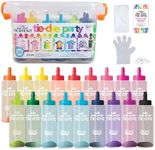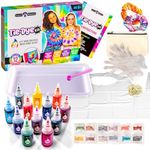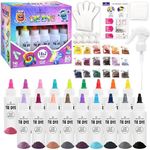Buying Guide for the Best Fabric Dyes
Choosing the right fabric dye can be a bit overwhelming, but with a little knowledge, you can find the perfect dye for your project. The key is to understand the different types of dyes available and how they interact with various fabrics. By considering the type of fabric, the desired color intensity, and the dyeing method, you can achieve beautiful and lasting results. Here are some key specifications to consider when selecting a fabric dye.Type of DyeThe type of dye is crucial because different dyes are formulated for different fabrics and dyeing methods. Common types include fiber-reactive dyes, acid dyes, and all-purpose dyes. Fiber-reactive dyes are best for natural fibers like cotton and linen, providing vibrant and long-lasting colors. Acid dyes are ideal for protein fibers such as wool and silk, offering rich hues. All-purpose dyes can be used on a variety of fabrics but may not provide as intense or permanent results. Choose the type of dye based on the fabric you are working with and the desired outcome.
Color FastnessColor fastness refers to the dye's ability to resist fading or washing out over time. This is important for ensuring that your dyed fabric maintains its color through multiple washes and exposure to light. Dyes with high color fastness are more durable and suitable for items that will be frequently washed or exposed to sunlight. If you need a long-lasting color, look for dyes specifically labeled as having high color fastness.
Ease of UseEase of use is an important factor, especially for beginners. Some dyes require complex processes and precise measurements, while others are more straightforward and user-friendly. For example, some dyes can be used in a washing machine, making the process simpler and less messy. Consider your comfort level and experience with dyeing when choosing a product. If you are new to dyeing, look for dyes that come with clear instructions and are designed for easy application.
Color RangeThe color range available in a dye line can influence your choice, especially if you have a specific shade in mind. Some dyes offer a wide spectrum of colors, while others may have a more limited palette. If you need a particular color, check the dye's color chart to ensure it includes the shade you want. Additionally, consider whether the dye can be mixed to create custom colors if you need more flexibility.
Compatibility with FabricNot all dyes work well with all fabrics. It's important to choose a dye that is compatible with the fabric you plan to dye. Natural fibers like cotton, linen, and silk generally take dye well, while synthetic fibers like polyester and nylon may require special dyes or pre-treatments. Check the dye's label to ensure it is suitable for the fabric you are using. If you are working with a blend of different fibers, look for a dye that can handle mixed fabrics.
Environmental ImpactThe environmental impact of a dye can be a consideration for eco-conscious consumers. Some dyes contain harsh chemicals that can be harmful to the environment, while others are formulated to be more eco-friendly. Look for dyes that are labeled as non-toxic, biodegradable, or low-impact if environmental sustainability is important to you. Additionally, consider the water and energy usage required for the dyeing process.

